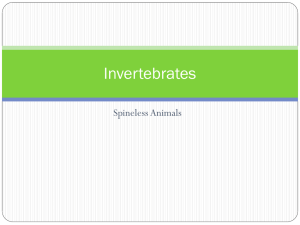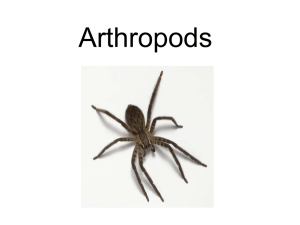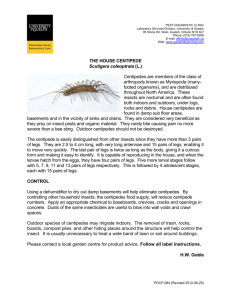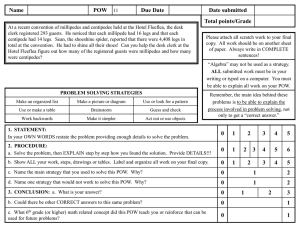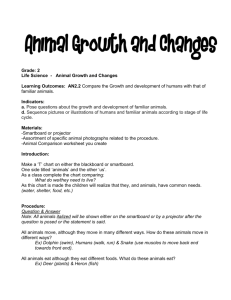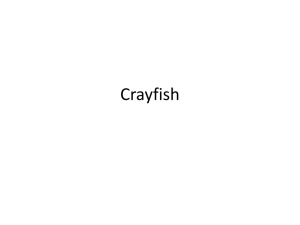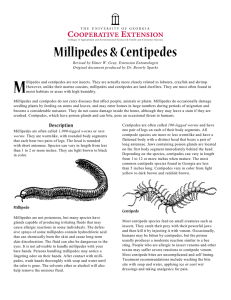PPT for 2.1 Page 3
advertisement
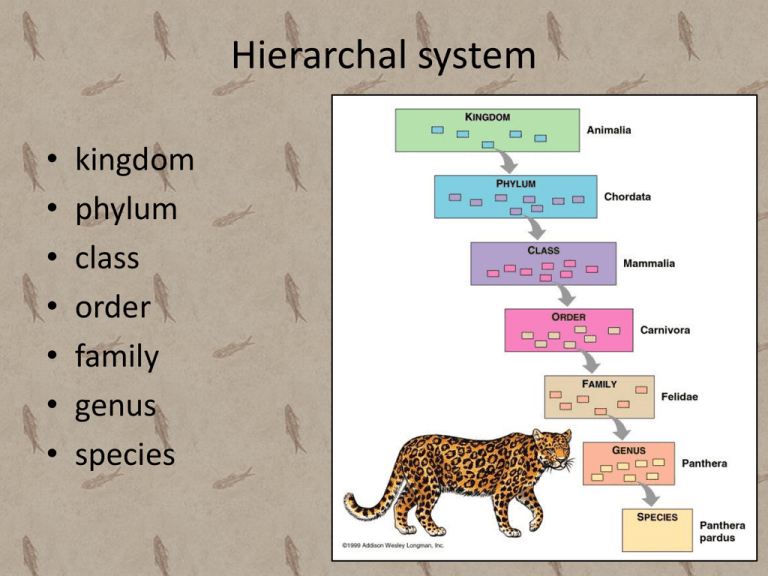
Hierarchal system • • • • • • • kingdom phylum class order family genus species Prokaryotae Kingdom • Unicellular, microscopic • Includes bacteria and blue-green algae • No internal membrane bound organelles • No nucleus • Cell wall not cellulose, murein Protoctista kingdom • Unicellular; microscopic – mainly single cell organisms, no tissue differentiation • Nucleus present – Eukaryotic (nucleus and membrane bound organelles) • Autotrophic or heterotrophic • Includes algae and protozoa Amoeba (heterotrophic) Euglena (autotrophic) Fungi • Eukaryotic • No root, stem and leaf – Rigid cell walls of chitin • Heterotrophic – Saprophytic or parasitic – No chlorophyll • Reproduce by forming spores • Includes mold, yeast, mushrooms bread mold rhizopus Plantae Kingdom Eukaryotic – Multicellular – Photosynthetic (Autotrophic) – Cellulose cell wall • Can be divided into two groups: – Non-flowering plants – Flowering plants – Mosses – Ferns – Conifers Animalia • Heterotrophic • Multicellular eukaryotes • No cell wall • Nervous coordination • Divided into two groups according to the presence or absence of backbone: – Invertebrates : without backbone – Vertebrates/Chordates : with backbone • Only need to know Basic Features of: – Annelids – Arthropods (four subdivisions) – Chordates Annelids - examples - earthworm, leech, and lugworm – Long thin segmented bodies with a closed circulatory system and oxygen carrying pigment – Fluid filled cavity and hydrostatic skeleton – Primitive brain and nervous system – specialised segments responsible for different functions, – thin permeable skin used for gas exchange earthworm lugworm leech Arthropods have…. – an exoskeleton • Made of chitin • For support and to protect organs • Allows muscle attachment for movement • Protection from predators • Reduces water loss • Cannot grow and so must be shed periodically, leaving the organism unprotected while the new exoskeleton hardens Arthropods-have – paired jointed legs • For walking, swimming, jumping, feeding, reproduction, and sometimes gill ventilation – 3 body regions (head, thorax, abdomen) – fluid-filled body cavity – open circulatory system – well developed brain Arthropods – examples : • insects e.g. locust • crustaceans e.g. lobster • arachnids e.g. spider • myriapods e.g. millipedes and centipedes Insects Insects are the most successful group of animals on Earth. • compound eyes • terrestrial insects use tracheae for gas exchange • 2 pairs of wings • 3 pairs of legs in the adult stage (In the evolution of some insect groups these features may have been secondarily lost, e.g. no wings in fleas and lice.) locust Crustaceans 2 body sections: cephalothorax and abdomen 2 pairs of Antennae 5 or more pairs of legs lobster Arachnids •4 pairs of legs •No antennae •Usually two body sections spider Myriapods • Millipedes and centipedes • Terrestrial Centipedes • one pair of legs per segment • Predators Millipedes • 2 pair of legs per segment • decomposers Animals – Vertebrates (Chordates) • possessing a vertebral column or backbone • well developed brain enclosed in cranium • internal skeleton Vertebrates • Divided into 5 phyla (groups) : – Fish – Amphibians – Reptiles – Birds – Mammals Fish • • • • • Aquatic Ectotherms Body covered with wet and slimy scales Streamline body for easy movement through water Fins for balance and to control movement • Gills for gas exchange • External fertilization Amphibians • Ectotherms • Moist, scale less skin • Limbs present – tetrapods • Larvae (tadpoles) use gills for breathing; adults use lungs • External fertilization • Live on land but need water for part of the life cycle Reptiles • Ectotherms • Body covered with dry, hard scales • Live on land • Breathe with lungs • Internal fertilization; lay shelled eggs Birds • • • • • Endotherms With feathers and wings Beak for feeding Lungs for breathing Internal fertilization; lay shelled eggs • Scales found on legs Mammals • Endotherms • Hairs on skin and sweat glands • Females have mammary glands for producing milk • Lungs for breathing • Double circulation • Internal fertilization and gestation
